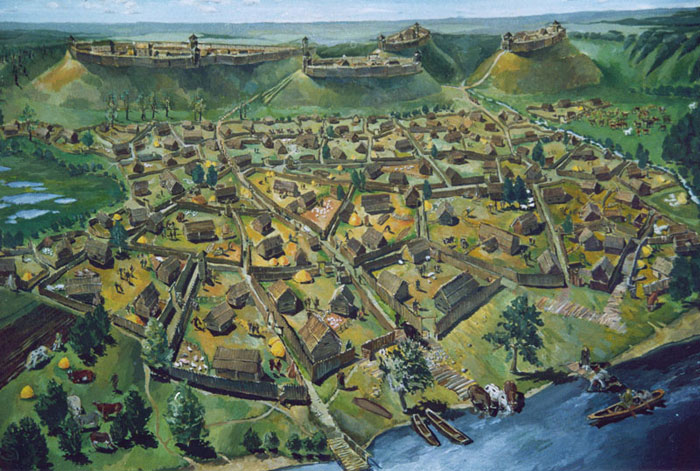Kernavé archaeological site - World cultural heritage in Lithuania
Unesco's Scientific, Educational and Cultural Organization has recognized Lithuania's Kernavé Archaeological Site as a World Cultural Heritage 2004.

Kernavé archaeological site is located in the Neris river valley in the Baltic region of Europe. This area is a special testament to the lives of residents here for 10 millennia.
Kernavé archaeological site is an area consisting of the town of Kernavé, fortress, archaeological site, settlements of civilians, foundations and traces of Middle-aged fortresses .

For a long time, the area was flourishing and flourished with many fortresses and important defense systems of the town of Kernavé. This is also an important old town in Lithuania's history. Until the 14th century, the fortresses were destroyed by the Teuton empire, so far only its vestiges remain.

The archaeological site is 194.4 hectares wide, with many important sites with Lithuanian archeology . This place holds many cultural evidences from the Stone Age period, which are still being studied and explored by archaeologists.

Lithuania's Kernavé archaeological site is recognized by Unesco under the criteria (iii), (iv).
Criterion (iii): Kernavé archaeological site is a special testament to the development of settlements of people in the Baltic Sea region of Europe over a period of up to 10 millennia.
Criterion (iv): In the area of Kernavé Archaeological Site there are architectural works of religious history, in particular here Christianity.




The artifacts were excavated from the Kernavé site
In the history of Lithuania, from the first century to the 4th century AD, the area on the banks of the Neris River began to show up in groups of people, over time the settlements grew and grew. development. During a major migration at the end of the Roman period, many villages and buildings, wood fortifications were destroyed and burned . from which the valley area on both sides of the river was abandoned. In the following years, the area continued to suffer from bad weather, flooding, landslides . residents living here had to move to higher areas such as river hillsides to reside.
 The excavated remains at the Ruins are now kept in Lithuanian museums
The excavated remains at the Ruins are now kept in Lithuanian museums
By the 11th century, the 12th town of Kernavé had important developments. The 12th and 13th centuries are the period of many castles and military buildings built here. Until the middle of the 13th century, the town really flourished with many diverse and economically stable handicrafts. Many beautiful and large architectural works were also built during this period. At the same time, Christianity according to foreign missionaries who had infiltrated from before actually developed and became popular. Christianity in the town of Kernavé interferes with other neighborhoods and changes to adapt to the environment itself.

For a long time in its history, the old town of Kernavé became the most enlightened in the period from the 13th century to the early 14th century. By the middle of the 14th century, the town was attacked and devastated by the empire. Teuton . After the war ended, the town was not rebuilt and abandoned. People have left this place to migrate to higher areas to live. The old town is covered by silt, mud and forgotten for a long time.
Antiquities found in excavations at the Ruins are kept and displayed in national museums in Lithuania . So far, there are still international research groups and archaeologists coming here to explore and conduct excavations.
- Ban Chiang archaeological site
- Archaeological site of Lenggong valley
- Archaeological site Epidaurus
- Sammallahdenmaki Bronze Age archaeological site in Lappi
- Archaeological site on Mount Camel
- Archaeological site Fuerte de Samaipata
- Stone carvings in Tamgaly archaeological area
- Archaeological site of prehistoric people in Sangiran
- Bisotun archaeological area
- Archaeological site L 'Anse aux Meadows - Canada
- Xanthos capital and Letoon archaeological site
- Archaeological area Takht-E Soleyman
 Suzhou classic bonsai garden - China
Suzhou classic bonsai garden - China Chau Nguyen Dynasty
Chau Nguyen Dynasty Thai Son Mountain - World Wonder
Thai Son Mountain - World Wonder Ancient villages of Shirakawa-go and Gokayama
Ancient villages of Shirakawa-go and Gokayama